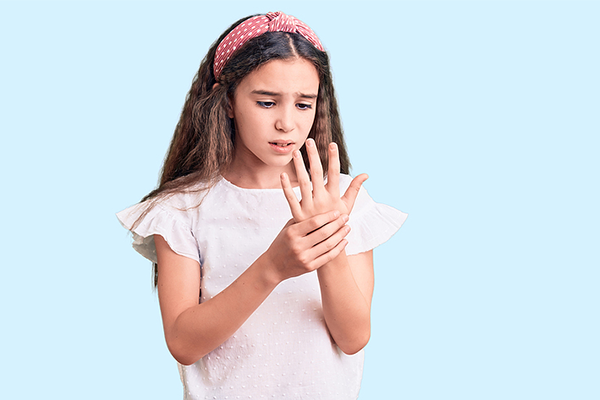Not Just for Adults: How to Manage Arthritis in Kids
When you think about arthritis, older adults experiencing joint issues may come to mind. While arthritis is certainly most common among adults, it also affects children.
In fact, according to the Arthritis Foundation, more than 300,000 American children have what’s known as “juvenile arthritis.” Like arthritis in general, juvenile arthritis isn’t a single medical condition—it’s an umbrella term for a group of medical conditions that cause inflammation and pain affecting the joints.
Let’s take a deeper dive into the topic, including how you can help your child cope after a diagnosis.
How to Know if Your Child Is Dealing With Arthritis
If your child has been experiencing persistent joint pain, arthritis could be to blame. Beyond discomfort around the joints, juvenile arthritis may also cause:
- Difficulty with daily activities
- Fatigue
- Fever
- Limping
- Loss of appetite
- Rash
- Reluctance to use an arm or leg
- Stiffness
- Swelling
While aches and pains are a fairly normal part of childhood, particularly for active kids, persistent pain and discomfort should be checked out by a pediatrician. Untreated juvenile arthritis can cause permanent damage to the joints, so a proper diagnosis and treatment plan are important.
Managing the Symptoms of Arthritis in Kids
Your first step in helping your child is to see a doctor. Your child’s pediatrician or another medical provider can confirm whether juvenile arthritis is a factor and provide a treatment plan to mitigate the condition.
But you can also take other steps to help your child overcome arthritis symptoms. These tips may help:
- Keep your child active. While exercise may be the last thought that comes to mind when a person has arthritis, it is actually quite helpful. Keeping the joints active and warm can help limit pain and discomfort. Try joint-friendly activities like swimming.
- Eat an anti-inflammatory diet. Because arthritis is inflammation, eating foods that fight inflammation can help ease discomfort. Serve up fatty fish like salmon, as well as cherries, broccoli, citrus fruit, whole grains and beans.
- Warm up the joints. Warm baths and heated blankets can also help ease joint pain, so try them out as your child drifts into or out of sleep.
- Prioritize getting enough sleep. While arthritis pain can sometimes make it more difficult to sleep, quality sleep can help lessen arthritis symptoms. Establish a healthy bedtime routine to help your child fall asleep and ensure bedtime and wake time allow for the recommended amount of sleep based on your child’s age.




